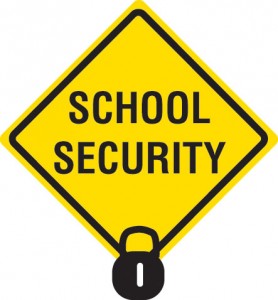ASIS International product reveiw for NewDawn Security !
ASIS Product Review:
26 Safe School Standards Webinar
By Steven Lester
As not only a Young Professional by the membership categorization of ASIS International,but literally as a young careerist freshly emerging from my undergraduate studies with a Bachelor of Science degree, I am quickly learning the importance of embracing opportunities to expand my knowledge base and differentiate myself from other aspiring security professionals.
Recently, I made my first purchase from the ASIS Online Store, ordering the “26 Safe School Standards” Webinar. I highly recommend this Webinar for anyone who is interested in school safety, regardless if one is employed at a K-12 institution or if one is merely a concerned parent.
I would claim that the “26 Safe School Standards” presents a critically important perspective on the modern state of K-12 school safety and security. The Webinar introduces viewers to the admirable efforts of Sean Spellacy and his team at New-Dawn Security in their mission to redefine stakeholders expectations for the capabilities and professionalism of K-12 school safety.
Whether or not schools can afford to maintain a dedicated security department, all may benefit from adopting the 26 Safe School Standards approach, a risk-based and prevention-oriented system that seeks to establish an objective measurement of school security.
Evaluating school safety Sean Spellacy, an accomplished professional in both security and school administration, and an inter-disciplinary team sought to develop an evaluation program that could “prove” that a school was safe. By expanding upon an older, 15 standard system that was jointly produced by the U.S.
Department of Education and the Department of justice and that, in practice, went largely under-utilized, Spellacy’s team brought today’s best asset protection and liability mitigation strategies to three areas of safety concerns, namely: “School Operations;” “Policies and Procedures;” and “Prevention.”
The 26 standards that populate these categories describe specific issues or topics, such as “crisis analysis response,” and “inventory control,” that forward-looking school administrators should address to best serve their education communities.
Under the NewDawn program, schools may be assigned a score ranging from one to five for each of the 26 standards, based on how well the school has invested in best practices for that area. Schools that perform well in this regard qualify for the Excellence in Safe School Operations (ESSO) certification.
The best of such qualifying schools attain a 5/5 score in all 26 program areas.
If I were to take one concept away from the “26 Safe School Standards” Webinar, it would be that the 26 standards were developed—as noted by Sean Spellacy during the presentation—to provide schools with a tool that they needed, not
necessarily one that they wanted.
The August 2014 edition of Security Management features an article that describes lessons learned by school safety stakeholders in the wake of the Sandy Hook tragedy. The piece presents anecdotes of various investments that schools have made to improve active shooter response, physical security infrastructure, and anti-bullying initiatives. Each of these accounts represents a commendable endeavor to bolster school safety in an uncertain world.
Even from my limited experience within the K-12 system thus far, I understand that these investments are victories from the hard-fought battles at School Committee meetings, staff and parent buy-in campaigns, etc.
Moving to the next level However, school administrators must realize that their fights do not end with those individual victories. They must accept that active shooter response plans and anti-bullying programs are merely parts of an overall framework of safety and security that encompasses all of the school’s assets — human, information, or material in nature.
This framework should address active shooter prevention — i.e. threat evaluation teams and student support services — with the same attention as is paid to active shooter response and which ever alphabet soup variation of practice to which the school subscribes.
Administrators should understand that failing to implement sound internal policies, such as those guiding employee management and information security, may one day prove as costly for the school as failing to prepare for some external threat, be it a natural disaster or a violent offender.
Building a security management framework that accounts for all of these different threats to our nation’s schools requires a serious commitment of resources, time, and patience. The scale of this investment will likely be scoffed at by other stakeholders who may be preoccupied with putting budget dollars where they need to go to ensure basic operations for the next school year.
Fortunately, Spellacy and NewDawn Security’s “26 Safe School Standards” have provided not only a vision, but a practicable foundation for necessary school safety reform. As I continue to investigate other school security resources, I am confident that the next ASIS Store purchase I make will be of equally great value and utility.
[one_third padding=”15px 10px 10px 0px”]
- Identify and mitigate all risk factors
- Measurable increase in levels of safety and security
- Discipline incident reduction
- Increase of positive school climate
- Reduction of insurance liability rates
[/one_third]
[one_third padding=”15px 10px 10px 40px”]
- Increased peace of mind
- Enhanced learning environment for your child
- 24/7 Parental Concern reporting and advice line
- Support and Empowerment Services provided
[/one_third]
[one_third padding=”15px 10px 10px 100px”]
- Request an in-person presentation
- Schedule a confidential Safe School Assessment
- Receive results and proposal
[/one_third]

